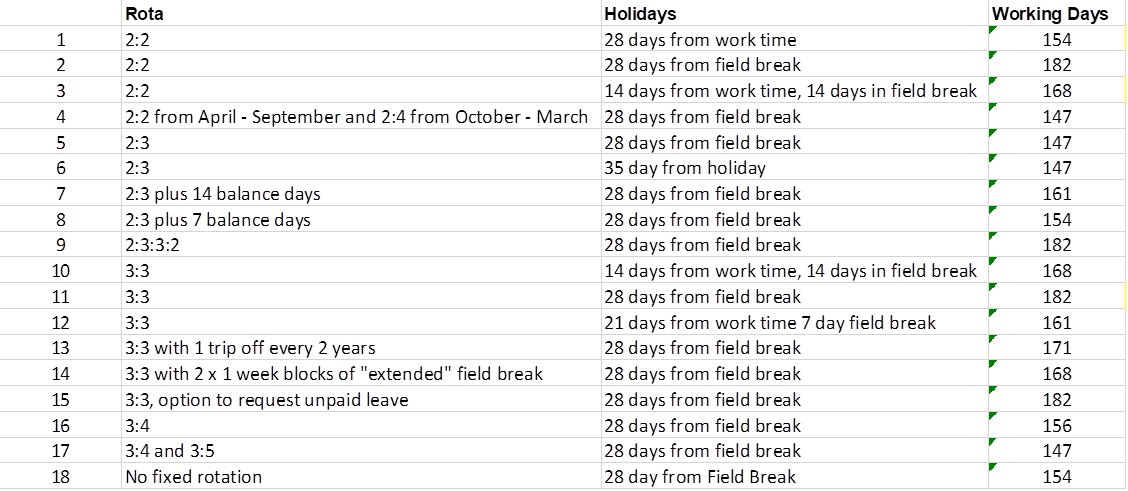
An Aberdeen academic has said the North Sea rotas picture is less perplexing than it may seem.
David Gibbons-Wood, economics lecturer at Robert Gordon University (RGU), said the number of base schedules in operation is actually quite small.
Referring to a table showing the 18 different timetables in operation this year, Mr Gibbons-Wood said the number was “slightly confusing” because of holidays.
He said there were three dominant rotas – two weeks on, two weeks off (2:2), 2:3 or 3:3.
RMT regional organiser Jake Molloy said the big problem is that contractors on some installations are being assigned rotas which are less favourable than those given to operators’ full-time employees.
Mr Molloy said the situation created an “us and them” mentality.
He described the tendency for some employers to switch to three week, equal time rotas during the downturn as one of the most “emotive” issues of the last four years.
Earlier this year, the Review of 3 and 3 Rotation in Operation report by Mr Gibbons-Wood and colleague Anne Stevenson found that those spending three weeks offshore at a time were almost twice as likely to experience ill health as those doing two-week stretches.
Recent developments include Shell deciding to revert back to 2:3, though not until next year.
Total employees accepted a 15% pay rise in exchange for moving to 3:3.
Apache will switch its own staff members back to 2:3, but contractors will remain on 3:3.
Repsol Sinopec is conducting a review of its 3:3 schedule, with a decision expected before the end of the year.
On the 18 different rotas, Mr Gibbons-Wood said: “The number is slightly confusing in a way, because those 18 rotas would be an amalgam of both the rota pattern work, for example, whether its 2:2, 2:3 or 3:3, and the holiday pattern that is worked.
“Some people say that there are 18 rotas in the North Sea, and from the point of view of the Offshore Contractors’ Association (OCA), that may well be the total number of different rotas that can be identified using a combination of rota and holiday pattern.”
He added: “Pretty much everybody falls into the category of 2:2, 2:3 or 3:3 and there’s a tiny number of people who do rotas like 2:2 and then 2:4.
“Really, almost everyone works the first three rotas. But then you’ve got different holiday patterns.”
“It gets really complicated as some people take holidays from work time while some take it from their field break, so that’s where the figure of 18 comes from.”
Recommended for you

